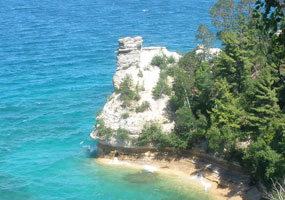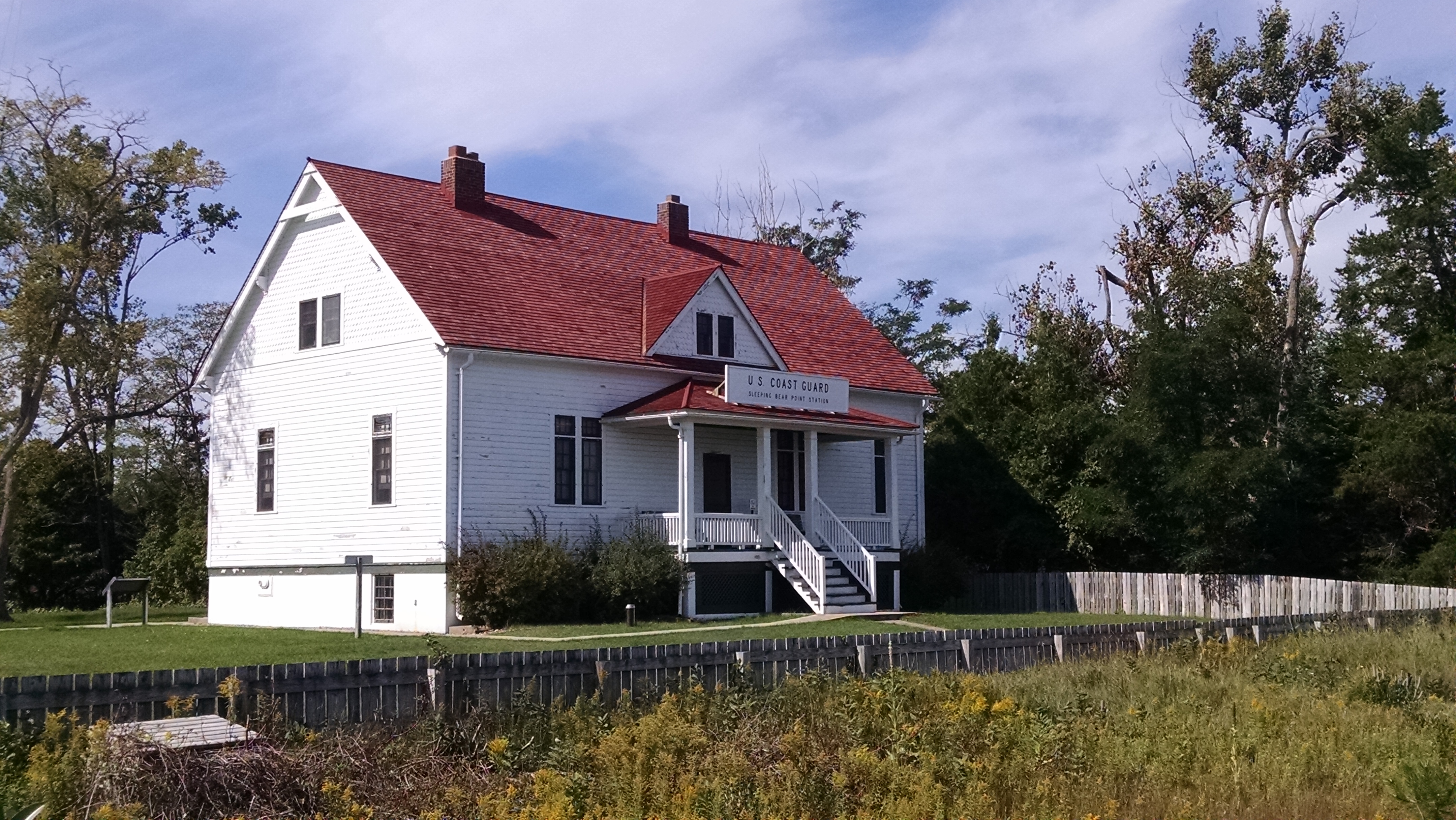By ERIC FREEDMAN
Capital News Service
LANSING — One draws more than a million visitors each year, others only a fraction of that number.
Some boast internationally recognizable names, others fall outside the public spotlight.
They’re Michigan units of the National Park Service (NPS), which celebrates its centennial this year. Popular or not, widely familiar or not, they’re publicly owned treasures of environmental and natural resources, historic and cultural wealth, recreation and national identity.
While the system has its origins in an 1872 law creating Yellowstone National Park, Congress waited until 1916 and Woodrow Wilson’s presidency to establish the NPS. The system now encompasses 409 units with more than 84 million acres. Collectively, they drew about 280 million visitors in 2014.

Mines Castle at Pictured Rocks National Lakeshore. Credit: Benda St. Martin, National Park Service
In Michigan, the best-known are Isle Royale National Park (about 19,000 visitors in 2015) in Lake Superior, Sleeping Bear Dunes National Lakeshore (1.5 million visitors) on Lake Michigan and Pictured Rocks National Lakeshore (739,000 visitors) in the Upper Peninsula.
The other two are lesser-known: River Raisin National Battlefield Park in Monroe and the U.P.’s Keweenaw National Historical Park headquartered in Calumet.
The Washington-based National Parks Foundation says it’s important “to ensure that the centennial is more than a birthday. We want people everywhere to embrace the opportunities to explore, learn, be inspired or simply have fun in their 407 national parks, as well as understand how the National Park Service’s community-based recreation, conservation and historic preservation programs positively impact their own communities.”
The Great Lakes region is also home to two national parks that each attract more than 1 million recreational users annually: Indiana Dunes National Park in Indiana (1.6 million visitors in 2015) and Cuyahoga Valley National Park in Ohio (2.3 million).
NPS units in Michigan already have scheduled many commemorative events.
For example, the centennial “is a big deal for us,” said Jo Holt, the historian at Keweenaw National Historical Park.

Life-Saving Station at Sleeping Bear Dunes National Lakeshore. Credit: Eric Freedman
Centennial events will be part of such activities as the annual CopperDog 150 sled dog race Feb. 26-28 that starts and ends in the park and the National Public Lands Day annual bicycling tour Sept. 24, she said.
Sleeping Bear Dunes will mark the centennial and “highlight the value of national parks as our nation’s ‘living laboratories’ with a series of monthly public talks by park researchers. Topics for the “Research Rendezvous” series include “Natural History of Bats in Michigan,” “Hibernation of Bats and White-nose Syndrome,” “Comparison of Coastal Landforms and Sediments between Sleeping Bear Dunes and Indiana Dunes National Lakeshores,” “Investigating the Importance of Deer for Lyme Disease Ecology: a Natural Experiment Presented by Lake Michigan Islands” and “Avian Botulism in Lake Michigan: How Does it Happen?”
ADDITIONAL RESOURCES FOR CNS EDITORS
National Park Service: www.nps.gov
Sleeping Bear Dunes National Lakeshore: http://www.nps.gov/slbe/index.htm
Pictured Rocks National Lakeshore: http://www.nps.gov/piro/index.htm
Isle Royale National Park: http://www.nps.gov/isro/index.htm
River Raisin National Battlefield Park: http://www.nps.gov/rira/index.htm
Keweenaw National Historical Park: http://www.nps.gov/kewe/index.htm
National Park Foundation: http://www.nationalparks.org/